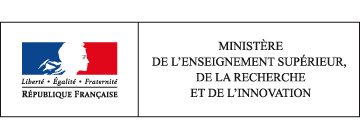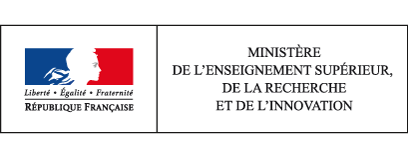07 the baccalauréat examination and baccalauréat holders
This page has been updated. Read 07. the baccalauréat examination and baccalauréat holders in Higher education & research in France, facts and figures 10th edition - June 2017
At the 2014 session, 625,700 of the 710,800 candidates obtained their baccalauréat (88.0%), bringing the proportion of baccalauréat holders in a generation to 77.4%. Over half of these candidates obtained a technological or vocational baccalauréat.
At the 2014 baccalauréat session, 710,718 candidates sat the exam in France and 625,650 obtained their diploma. The pass rate increased in all three branches (chart 07.01). Overall, the pass rate rose by 1.1 points compared with 2013 and reached a historic high of 88.0%.
At this session, 305,700 candidates obtained a general baccalauréat, 129,200 a technological baccalauréat and 190,800 a vocational baccalauréat. Almost 30,000 more candidates took this third option than in 2013. The inclusion in the 2014 session of candidates from the 'Support, care and services for individuals' speciality, in addition to the improved pass rate of pupils taking the vocational path (+3.3 points), were the main reasons for this latest increase in numbers. The vocational path has returned to its historic high level of 2012. Numbers in the general path were stable compared with 2013: the increase in successful candidates in the scientific (S) series made up for the fall in the arts & humanities (L) series. For the first time since 2000, the number of candidates taking the technological path increased significantly.
Between 1995 and 2014, the distribution of baccalaureat holders (table 07.02) shifted in favour of the vocational specialities. The proportion of vocational candidates increased sharply (almost 8 points) between 2010 and 2014 when the vocational path was reformed, or almost 17 points more than in 1995. The vast majority of pupils in their 4th year of secondary education ('troisième') who choose the vocational path now opt for a course leading to the baccalauréat. In turn, the proportion of pupils taking the general baccalauréat has fallen by almost 10 points and for those taking the technological baccalauréat by almost 7 points.
In 2014, 77.4% of the generation of young people (excluding Mayotte) obtained the baccalauréat: 37.7% obtained a general baccalauréat, 16.0% a technological baccalauréat and 23.8% a vocational baccalauréat (table 07.03). Since 1985, the number of baccalauréat diplomas awarded annually has more than doubled and the proportion of baccalauréat holders in a generation has increased from 29.4% to 77.4%. This sharp rise is mainly due to the increase in the numbers taking the general baccalauréat and the rapid development in the vocational baccalauréat, introduced in 1987. Between 1995 and 2008, in contrast to the long period of growth that had gone before, the proportion of baccalauréat holders in a generation reached a plateau and hovered around 62%; it then increased by 3 points in 2009 when resit sessions were introduced for the vocational baccalauréat. It remained stable in 2010, then fluctuated during the transition phase that followed the reform of the vocational path (baccalauréat in 3 years rather than 4) and increased by more than 12 points in 4 years.
Almost one baccalauréat holder in four comes from a background of managers and higher intellectual professions, the socio-occupational category that is most represented (chart 07.04). This is particularly true for the general path, with more than one in three coming from this background. Children of employees are proportionally most numerous among holders of a technological baccalauréat, and children of manual workers in the vocational path.
MAAF.
How to cite this paper :
close
Key figures
baccalauréat holders
Metropolitan France + overseas departments
candidates
Metropolitan France + overseas departments
general baccalauréat holders
Metropolitan France + overseas departments
general baccalauréat holders
Metropolitan France + overseas departments
general baccalauréat holders
Metropolitan France + overseas departments
Metropolitan France + overseas departments
Metropolitan France + overseas departments
Metropolitan France + overseas departments
Metropolitan France + overseas departments
Metropolitan France + overseas departments
Metropolitan France + overseas departments
Metropolitan France + overseas departments
Metropolitan France + overseas departments
07.01 Change in baccalauréat pass rate according to study path since 1995 (%)
MAAF
You can embed this chart to your website or your blog by copying the HTML code and pasting it into the source code of your website / blog:
close
07.02 Change in and distribution of baccalauréat candidates between sessions 1995, 2013 and 2014
1 excluding Mayotte.
MAAF
You can embed this table to your website or your blog by copying the HTML code and pasting it into the source code of your website / blog:
close
07.03 Distribution of successful candidates (excluding agricultural technological and vocational specialities) in 2014 by social background (%)
MENESR-DEPP
You can embed this table to your website or your blog by copying the HTML code and pasting it into the source code of your website / blog:
close
07.04 Proportion of baccalauréat holders in a generation (sessions from 1950-2014p) (%)
The proportions of baccalauréat holders in a generation for the sessions from 2011 to 2014 have been updated based on the demographic review published by Insee in March 2014. Values may therefore differ from those published last year.
This review provides provisional population estimates from 2012 onwards. The proportions of baccalauréat holders in a generation for sessions 2012 to 2014 are therefore provisional.
p: provisional.
MAAF
You can embed this chart to your website or your blog by copying the HTML code and pasting it into the source code of your website / blog:
close
Related statistical publications
 Note d'information DEPP 16.07 - Résultats définitifs de la session 2015 du baccalauréat - Fanny Thomas - March 2016
Note d'information DEPP 16.07 - Résultats définitifs de la session 2015 du baccalauréat - Fanny Thomas - March 2016 2015. Il atteint 87,9 % : 91,5 % en général, 90,7 % en technologique et 80,5 % en professionnel.
L’effectif de candidats a baissé de près de 50 000 dans la voie technologique depuis 2004, dont 4 500 depuis 2014. Sur la même période, la voie professionnelle a augmenté de 96 000 candidats et la voie générale de 29 000 dont 10 000 l’an dernier. Dans le même temps, la proportion de bacheliers dans une génération a gagné plus de 16 points et atteint 77,2 % en 2015.
L’espérance d’obtenir le baccalauréat en 2015 pour un élève de sixième sous statut scolaire est la plus forte dans les académies d’Île-de-France, de Limoges, de Lyon, de Rennes et de Toulouse.
Dans 9 % des cas, les candidats au baccalauréat ont suivi un parcours spécifi que en langue, beaucoup plus souvent dans la voie générale et la série Hôtellerie qu’ailleurs.

 Note d'information DEPP 15.08 - Résultats définitifs de la session 2014 du baccalauréat - Fanny Thomas - March 2015
Note d'information DEPP 15.08 - Résultats définitifs de la session 2014 du baccalauréat - Fanny Thomas - March 2015 Seul le taux de réussite de la voie générale est en recul, surtout du fait des séries ES et L.
La réforme de la voie professionnelle a considérablement augmenté le nombre de bacheliers : entre 2010 et 2014, la proportion de bacheliers dans une génération a augmenté de plus de 12 points pour atteindre 77,4 %. Un tiers des candidats sont désormais dans la voie professionnelle et la part de ses bacheliers dans une génération est de 23,8 %. Enfi n, en portant à trois ans la durée du cursus dans les trois voies, la réforme de la voie professionnelle a aussi fortement contribué au rajeunissement des candidats.

Translation
 Etat de l'enseignement supérieur et de la rechercheL'état de l'Enseignement supérieur et de la Recherche en France n°8 - juin 2015
Etat de l'enseignement supérieur et de la rechercheL'état de l'Enseignement supérieur et de la Recherche en France n°8 - juin 201507 - le baccalauréat et les bacheliers - Fanny Thomas






